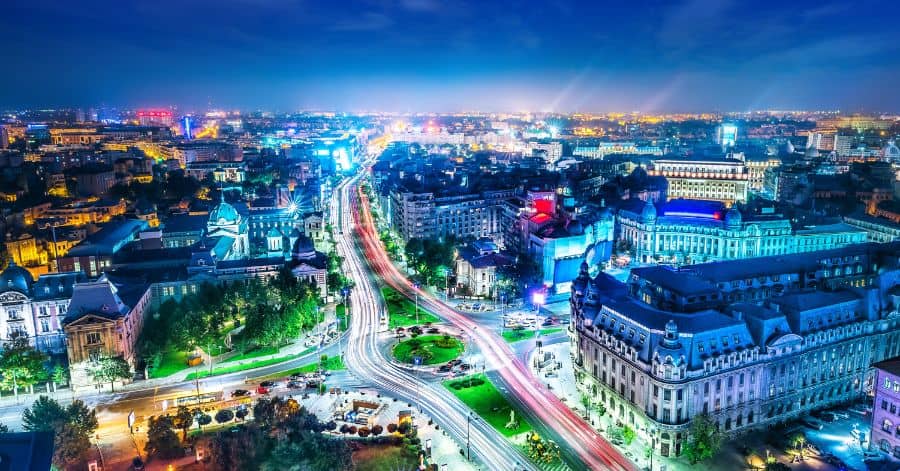Are you visiting Romania‘s capital for the first time? Then, you must be unsure about how to spend your time in the city or how to make the most of your trip. That’s why we present the best things to do in Bucharest, Romania. These activities revolve around the must-see attractions, including neoclassical palaces, historic museums, medieval cathedrals, beautiful temples, and vibrant public squares. Your trip will be about sightseeing, learning about the city’s culture and history, exploring, and relaxing. At the end of your journey, you will realize why this Romanian city is an irresistible destination for travelers worldwide.
Also Read:
- Top 15 Street Foods in Egypt
- Toronto Itinerary: A Friendly Guide to Newcomers
- Best Things to Do in Toronto When it Rains
- See The Romanian Athenaeum
- Tour The Palace of Parliament
- Enjoy A Leisurely Walk Across Șoseaua Kiseleff
- Learn A Thing Or Two At The National Village Museum (Muzeul Satului)
- Shop In Old Town Bucharest (Lipscani)
- Discover The Revolution Square (Piata Revolutiei)
- Plan A Trip To The Snagov Monastery
- Tour The Mogosoaia Palace (Palatul Mogoșoaia)
- See Everything There Is To Cotroceni Palace (Palatul Cotroceni)
- Visit Bucharest's Strongest CEC Palace (Palatul CEC)
- Enjoy A Free Visit To The Patriarchal Cathedral
- Remember The Fallen Victims Of Holocaust At The Holocaust Memorial
- Marvel At The Architecture Of Stavropoleos Monastery
- Visit The 19th-Century Great Synagogue
- Step Back In Time At The Romanian Peasant Museum
- See What's So Different About The Museum of Senses Bucharest
- Pray At The Choral Temple (Templul Coral)
See The Romanian Athenaeum
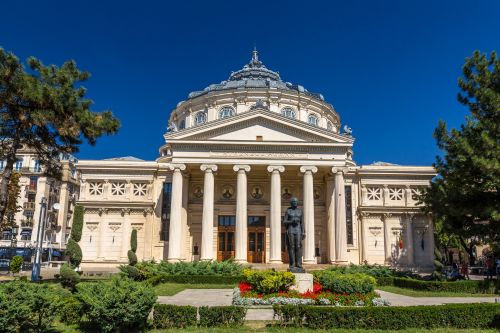
- Address: Strada Benjamin Franklin 1-3, București 010287, Romania; Google Map
- Visiting Hours: Visitors can tour the building based on the purchase of visiting tickets
- Ticket Price: ($3.23) 15 lei
We begin our list with the Romanian Athenaeum, an iconic concert hall in Bucharest. This building symbolizes Romanian culture and the arts and is a significant landmark. It was built at the end of the 19th century to host a public library, exhibitions, classical music concerts, conferences, and other cultural-artistic activities. Since 1889, it has been home to the George Enescu Philharmonic (previously the Romanian Philharmonic Society). You can catch concerts by great European composers and orchestras at the Athenaeum. Check out the Philharmonic’s event calendar on their official website to purchase tickets.
Tour The Palace of Parliament
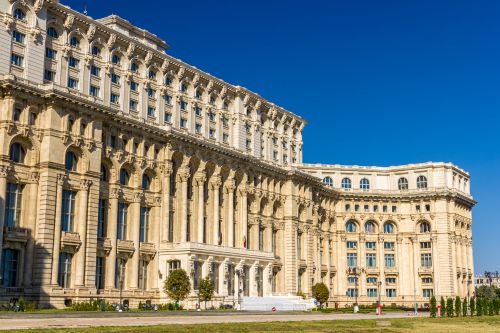
- Address: Strada Izvor 2-4, București, Romania; Google Map
- Opening Hours: 9 AM – 5 PM
- Social Media: Official Website, Official Facebook, Official X
Bucharest is known for its beautiful palaces, including the Palace of Parliament. This monumental building is one of the world’s largest and heaviest administrative buildings. It was built during Nicolae Ceauşescu’s reign during great economic deprivation. The building is divided into three main registers: the first register (featuring the main room, galleries, and cabinets), the second register (office area), and the third register (belvedere). It is spread across 365,000 square meters and built with almost entirely Romanian materials. Visitors can book guided tours that showcase the building’s lavishly decorated interiors.
Enjoy A Leisurely Walk Across Șoseaua Kiseleff
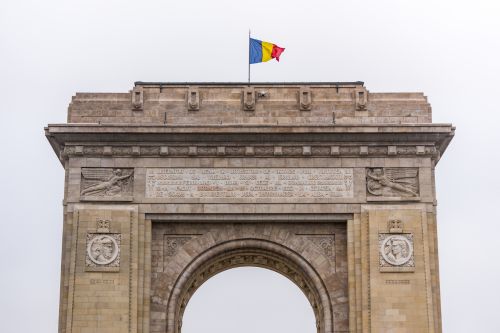
- Address: Bucharest, Romania; Google Map
- Opening Hours: 24 hours
- Things To Do: Leisure walks, bike rides, museum visits
Explore Bucharest on foot! Șoseaua Kiseleff is a perfect place to start. This broad, tree-lined avenue stretches north from Piata Victoriei. The street has museums, parks, government buildings, grand residences, and outdoor sculptures. The best thing to do here is go for a leisurely walk or bike ride. You can also stop by various museums and check out their exhibits there.
Learn A Thing Or Two At The National Village Museum (Muzeul Satului)
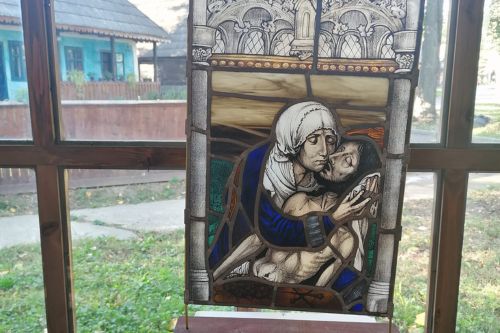
- Address: Şoseaua Pavel D. Kiseleff 30, București 011347, Romania; Google Map
- Opening Hours: 9 AM – 5 PM
- Social Media: Official Website, Official Facebook, Official Instagram
Next, the “Dimitrie Gusti” National Village Museum is an open-air ethnographic museum in King Michael I Park. This historical village museum allows visitors to experience meeting a real “village.” It showcases traditional Romanian village life with 123 authentic peasant houses, 50,000 artifacts, 363 monuments, and many workshops from different regions. Folklorist and sociologist Dimitrie Gusti coordinated intense and sustained theoretical and field research of museography experiments for over a decade. His hard work formed the National Village Museum, one of the few open-air Romanian museums.
Shop In Old Town Bucharest (Lipscani)
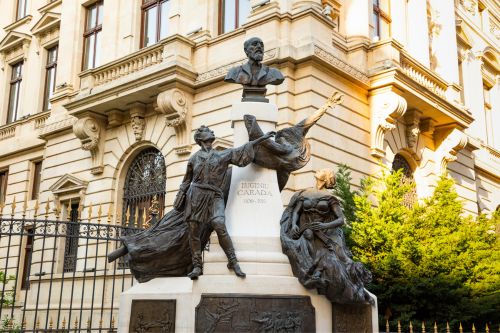
- Address: Centrul Vechi, Bucharest, Romania; Google Map
- Things To Do: Strolling, Shopping, Dining, Sightseeing
Bucharest seamlessly blends its storied past with the dynamic pulse of modern life. The Old Town (Lipscani) pays homage to its history and local culture. It emerged as the old district of artisans and merchants in the 16th century. Today, it is the heart of the city’s social life and features boutique shops, small pubs, local restaurants, buzzing discos, and lively cafes. It retains its old town charm with its tiny alleys and beautiful belle epoque buildings. This place is perfect for exploring by day and experiencing the vibrant nightlife after sunset.
Discover The Revolution Square (Piata Revolutiei)
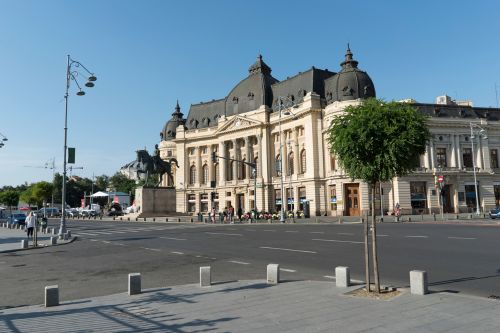
- Address: Bucharest, Romania; Google Map
- Things To Do: Guided walking tours, sightseeing
Are you ready to visit Revolution Square, where significant historical events occurred? This was the very same place where Romanian politician and former president Nicolae Ceauşescu and his wife, Elena Petrescu, fled from the Romanian Communist Party Headquarters’ roof by helicopter. This square was named after the Revolutions of 1989, which saw the final moments of Ceauşescu’s power before he and Elena were tried and executed. It will be an epic experience to walk through the square while learning about Nicolae’s rise in Romanian politics and his ultimate downfall.
Plan A Trip To The Snagov Monastery
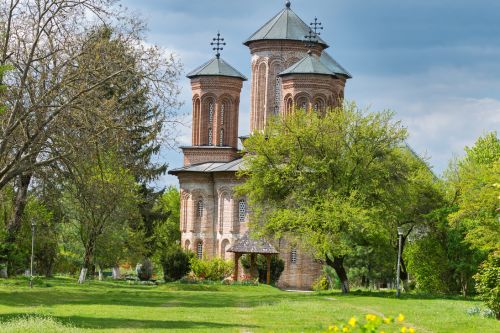
- Address: Strada Mânăstirea Vlad Ţepeş, Siliștea Snagovului 077117, Romania; Google Map
- Opening Hours: 7:30 AM – 1 PM; 2:30 PM – 6 PM
- Entrance Fee: ($4.31) 20 lei/person
Have you ever heard of Vlad the Impaler? He was a Romanian hero who ruled Romania three times between 1448 and his death in 1476/77. Snagov Monastery is dedicated to this great hero. It is located on an island in the northern reaches of Lake Snagov. Locals believe Vlad III is buried on the premises of the monastery. In addition to being the resting place of Vlad the Impaler, this church is known for its architectural elements. It is built in Byzantine style with brick-layered exterior. It has a balcony supported by 16 pillars of various geometric shapes, a nave, and an altar.
Tour The Mogosoaia Palace (Palatul Mogoșoaia)
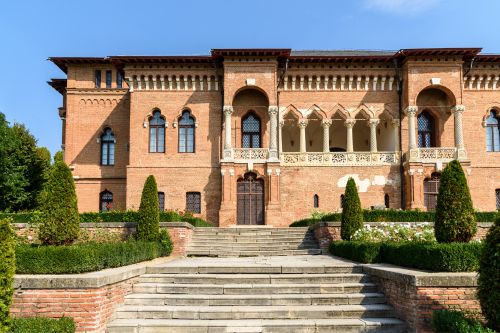
- Address: Strada Valea Parcului 1, Mogoșoaia 077135, Romania; Google Map
- Opening Hours: 10 AM – 6 PM
You can visit Snagov Monastery and Mogosaia Palace together. It will be a lovely half-day adventure where you will explore two significant Romanian landmarks. This palace sits next to Mogosoaia Lake, about 10km from Bucharest. Constantin Brâncoveanu built it between 1698 and 1702 in Brâncoveanu style (Romanian Renaissance Style). Named after the Romanian boyar Mogos, this building features a museum, an art gallery, and beautiful gardens. Visitors can tour the palace, check out exhibits, and enjoy leisurely garden walks.
See Everything There Is To Cotroceni Palace (Palatul Cotroceni)
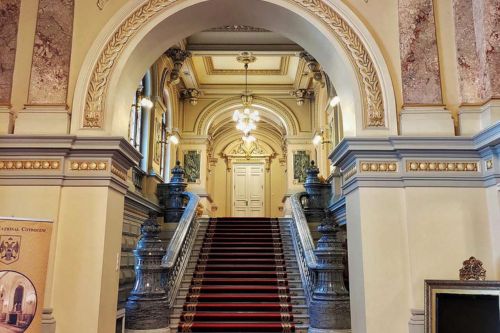
- Address: Bucharest, Romania; Google Map
- Opening Hours: 9:30 AM – 5:30 PM
- Ticket Price: ($11.84) 55 RON (Adults), ($7.10) 33 RON (Students), ($5.81) 27 RON (Pensioners)
Next, Cotroceni Palace is the head office of the Presidential Administration and the Romanian President’s official residence. This beautiful palace was initially a monastery in 1679 before being transformed into the prince’s summer house in 1862. Eventually, it became the official residence of the Romanian monarchs in 1888. The palace houses the Cotroceni National Museum, which hosts various scientific and exhibition programs. Visitors can tour the building and see various rooms, including the German Living Room, The Hunting Room, The Flower Room, the King’s Ferdinand Library, The Royal Apartment, the Queen Mary Bedroom, the French Apartment, and The Oriental Room.
Visit Bucharest’s Strongest CEC Palace (Palatul CEC)
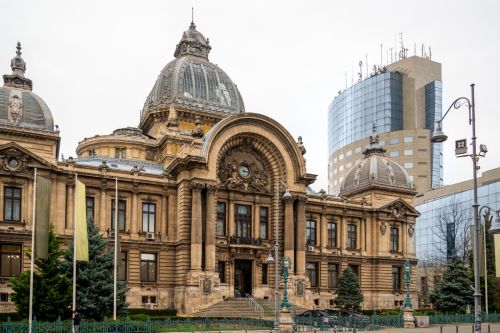
- Address: Calea Victoriei 13, București 030022, Romania; Google Map
- Opening Hours: 9 AM – 5:30 PM
- Social Media: Official Website, Official Facebook, Official Instagram
You can never have enough of palaces in Bucharest. Hence, we add another one to our list. CEC Palace is an iconic bank building constructed between 1897 and 1900. It was initially a monastery before becoming the headquarters of Romania’s first back institution, the Deposit House. Eventually, it became the headquarters for the Romanian bank, Consemnațiuni și Economie, aka CEC Bank. This palace is known for its eclectic architecture, featuring a glass-paneled dome and Baroque and Renaissance elements. It is among the most robust Bucharest buildings, having survived the 1977 earthquake.
Enjoy A Free Visit To The Patriarchal Cathedral
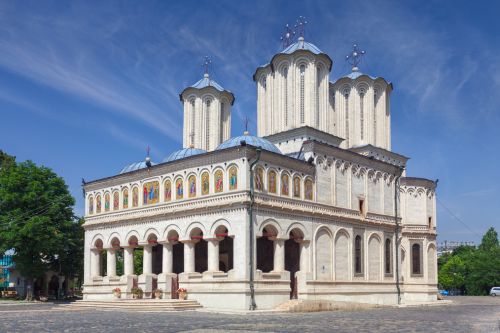
- Address: Aleea Dealul Mitropoliei 25, București, Romania; Google Map
- Opening Hours: 7 AM – 8 PM
- Entrance Fee: Free Entry
What could be better than a free attraction as one of the things to do in Bucharest, Romania? The Patriarchal Cathedral, aka Metropolitan Church, is a working cathedral. Residents who follow the Orthodox Christian faith frequently visit here to pray and attend religious practices. Construction of the building started in 1655 and was completed in 1659. It is an architectural masterpiece with Byzantine influences.
Remember The Fallen Victims Of Holocaust At The Holocaust Memorial
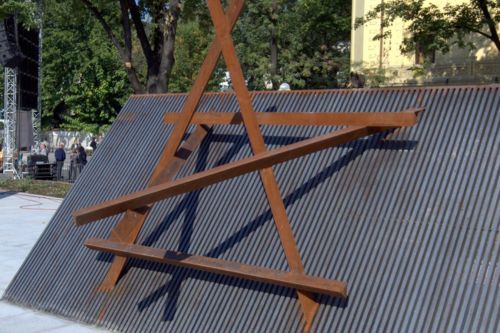
- Address: Strada Anghel Saligny 1, București 030167, Romania; Google Map
- Opening Hours: 24 hours
- Social Media: Official Facebook
It has been decades since the holocaust, but the wound remains. It saw the genocide of thousands of Jews at the hands of Hitler’s regime. While Germany was at the forefront of executing Jews, Romania was the second country to exterminate massive numbers. The Holocaust Memorial commemorates the approximately 25,00 Roma and 280,000 Jews who died due to their deportation to Transnistria in 1941. It symbolizes gas chambers, death trains, and other Holocaust events through its six sculptures: The Central Memorial, The Memorial Column, Via Dolorosa, The Rome Wheel, The Epitaph, and The Star of David.
Marvel At The Architecture Of Stavropoleos Monastery
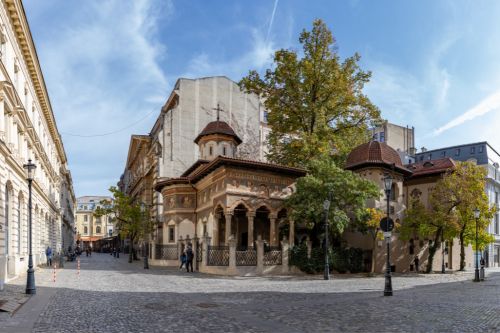
- Address: Strada Stavropoleos 4, București 030167, Romania; Google Map
- Opening Hours: 8 AM – 7 PM
- Social Media: Official Website
Let’s continue our Bucharest expedition with a trip to the Church of Stavropoleos Monastery. This free attraction has a monumental appearance with impressive interior and exterior murals, stone decorations, and paintings. The exterior murals feature St. John the Baptist, the Ecumenical Synods, and the miracles of the Archangel Michael. Likewise, the interior murals showcase military saints, the resurrection and harrowing of hell, martyred woman saints, and scenes from the life of the Savior and the Mother of God. Visitors can admire the architecture and attend Sunday masses, Byzantine music recitals, and concerts.
Visit The 19th-Century Great Synagogue
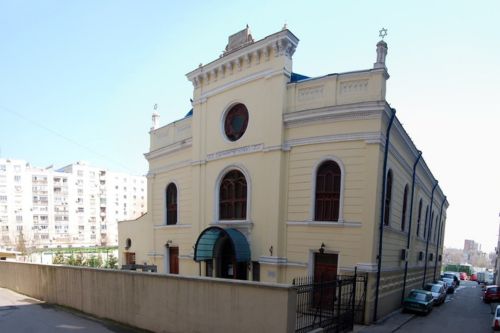
- Address: Strada Vasile Adamache 11, București 030167, Romania; Google Map
- Opening Hours: 9 AM – 1 PM
- Entrance Fee: Free Entry
Next, the Great Synagogue is a Jewish temple at 11 Vasile Adamache in Bucharest. The building was completed in 1846 with the help of the community of Ashkenazi Jews and officially opened in 1847 on the occasion of the Jewish New Year. This synagogue has since become a significant landmark in the city. However, it is no longer used as a place of worship; it houses the Holocaust Museum in Romania, which features many documents in written and photographic forms.
Step Back In Time At The Romanian Peasant Museum
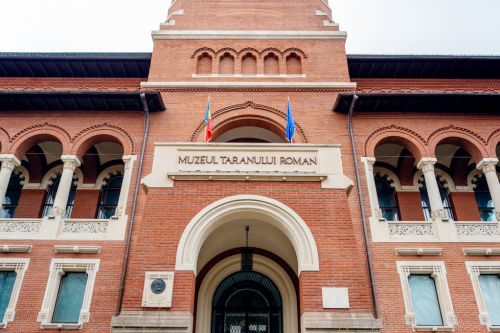
- Address: Şoseaua Pavel D. Kiseleff 3, București, Romania; Google Map
- Opening Hours: 10 AM – 6 PM
- Social Media: Official Website, Official Facebook, Official X
The Romanian Peasant Museum is Bucharest’s national museum. It is dedicated to Romanian peasant life and has a rich collection of textiles, ceramics, furniture, icons, hardware, wood, and other artifacts. This vast collection of nearly 90,000 objects is featured in a neo-Romanian-style historical monument building. Moreover, this museum received the 1996 European Museum of the Year Award. It also often organizes workshops for children, students, and families.
See What’s So Different About The Museum of Senses Bucharest
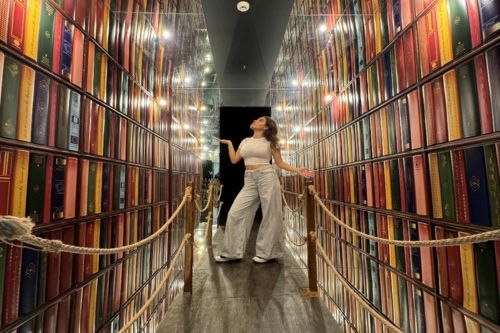
- Address: Bulevardul General Paul Teodorescu 4, București 061346, Romania; Google Map
- Opening Hours: 10 PM – 10 AM
- Social Media: Official Website, Official Facebook, Official Instagram
You might have never visited a museum like the Museum of Senses Bucharest. Here, you will feel each of your senses awakening. You will learn more about vibrations, perception, the human brain, touch, and science. This museum has over 40 exhibits that will awaken your five senses. It features a Mirror Library, 2D Room, Mirror Maze, Infinity Room, Pin Wall, Infinity Tunnel, Stereogram, Kaleidoscope, and Ames’ room. Each exhibit will inspire you to feel even more. Afterward, you can stop by the entertainment area and the souvenir shop.
Pray At The Choral Temple (Templul Coral)
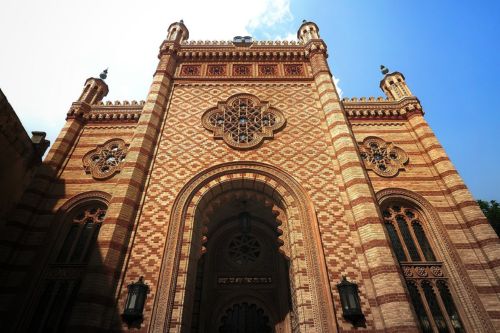
- Address: Strada Sfânta Vineri 9-11, București 030167, Romania; Google Map
- Opening Hours: 10 AM – 2:30 PM
- Social Media: Official Facebook
We conclude our list of things to do in Bucharest, Romania, with another synagogue. The Choral Temple is an Orthodox congregation and synagogue belonging to the city’s Jewish community. Unlike the Great Synagogue, you can worship here, and it is the most prominent mosaic place in the capital. This synagogue is stunning inside and out. It first attracts visitors with its symmetrical, fragmented facade. This temple features decorations with rosettes at the top, is layered in two-colored bricks, and is built in Moorish style. It also has a monument dedicated to Holocaust victims.
Bucharest is Romania’s capital and largest city. It is known for its medieval churches, neoclassical palaces, wide, tree-lined boulevards, and glorious Belle Époque buildings. These structures were inspired by and created in the French style. Add the city’s reputation for the high life, and Bucharest was once called “Little Paris.” Today, it is a bustling metropolis with numerous contemporary buildings, cultural venues, educational institutes, convention facilities, and recreational areas. This city also promises energetic nightlife for solo travelers and couples and kid-friendly activities for families. Hence, its tourism is thriving like never before.
 Chat with AI about Things to do in Bucharest
Chat with AI about Things to do in Bucharest

